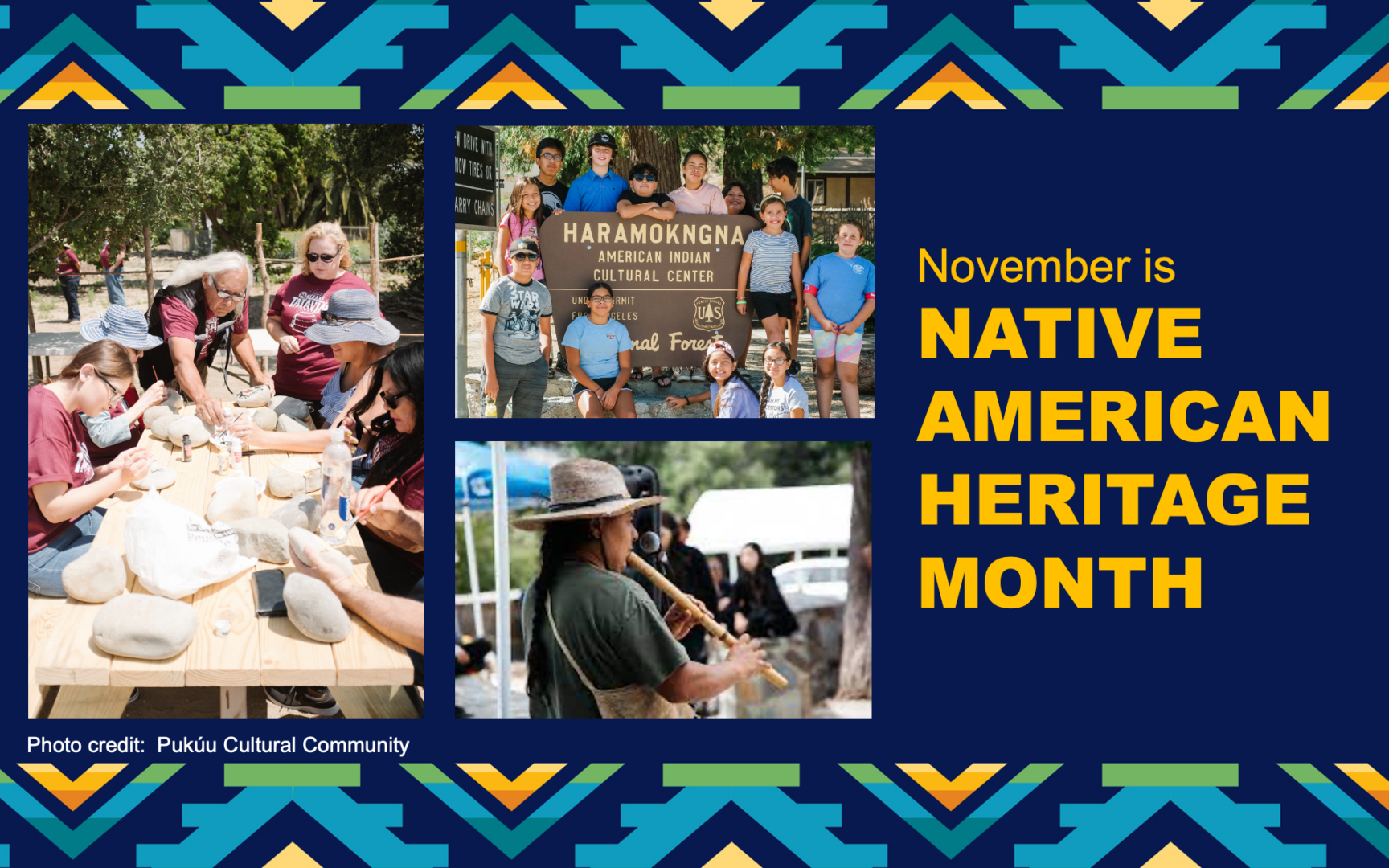An interview with Pamela Villasenor by Dave Dorado, Brkthru Special Projects Manager
November is National Native American Heritage Month and what started at the turn of the century as an effort to gain a day of recognition for the significant contributions the first Americans made to the establishment and growth of the U.S., has resulted in a whole month being designated for that purpose. Today it serves as a function of elevating the voices of Native Americans throughout the country.
To learn more about its significance, Brkthru senior project manager Dave Dorado spent time recently with Pamela Villaseñor, Executive Director of Pukúu Cultural Community Services. Pukúu was established in 1971 to enhance the lives of the Fernandeño Tataviam people and other American Indian community members who called Los Angeles County home.
Pam, why is National Native American Heritage Month significant for the Native American Community and you personally?
While I consider every day Indigenous Peoples Day, NAHM affords an opportunity to our non-Native community members to learn more about the traditions of Tribes and Native Americans whose lands they work, live, or reside on. My Tribe’s homelands, the Fernandeño Tataviam Band of Mission Indians, encompasses over 2,400 sq. miles of the Simi, San Fernando, Santa Clarita, and Antelope Valleys. Because of these four valleys, my Tribe often receives an overwhelming number of requests for information about our history, culture, and lifeways. In response, my Tribe has worked on creating space with the intention of reaching a wider range of audience members year-round through social media, website videos, language workbooks, education workshops, a cultural center, and more.
How is the month recognized by the Native American Community?
Tribes and Native American organizations often host events or share information about their communities during the month of November. Public events remind the world that our Nations are still here and invite non-Native community members to learn about us.
Do you and your family and friends have any special traditions in recognition of the month?
The fall equinox rings in a rich new season full of celebration. Fall is a time of harvest, and for my people that means gathering and processing acorns as a way to continue practicing our ancestral Indigenous Knowledges and food sovereignty. This is the season we plan for the coming of winter, a healing time for people to rest and reenergize. My tribe consists of families that gather together and share stories, songs, and gratitude.
How can others participate and recognize?
While some Tribal and Native American events are private, our community organizations often host events open to the public as well. My Native American non-profit Pukúu hosts an annual charity gala that is open to anyone who wants to celebrate alongside us. I encourage you to start small by finding out whose ancestral lands you reside upon. Then find a way to give back. Through AcknowledgeRent, my Tribe affords local residents an opportunity to give a meaningful contribution to my Tribe, the First People of Los Angeles County. Additionally, educating yourself can be a useful tool for advocating for and uplifting the Tribe’s activities to your friends, family, and community. Our website stores a wealth of knowledge, including training videos, historical timelines, and current Tribal events.
Pamela Villaseñor is enrolled in the Fernandeño Tataviam Band of Mission Indians (FTBMI) where she has worked tirelessly to help with the Tribe’s nation-building efforts. Villaseñor is the first California Native woman to serve as the Executive Director of Pukúu Cultural Community Services (Pukúu), the social service non-profit founded by the FTBMI. In this role Villaseñor supports policy and system change work that uplifts the narratives and resilience of Native Americans and Indigenous Peoples.
Villaseñor resides near her ancestral villages in the FTBMI’s homelands of northern Los Angeles County, where she raises her daughter. As a FTBMI Knowledge Keeper, Villaseñor uplifts the Traditional Ecological Knowledges of her Tribe, and teaches her daughter to gather and process traditional plants and foods.
